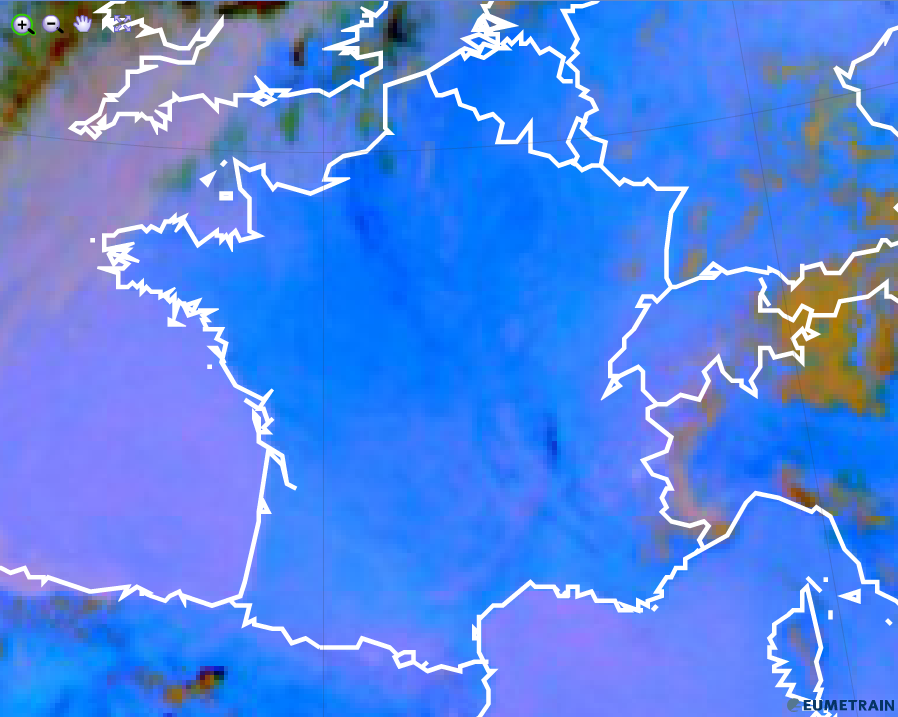Cloud free land
Warm cloud free land depict in a blue colour in the Dust RGB images.
The red colour beam reflects the brightness temperature difference (BTD) IR12.0 - IR10.8. The difference depends on the emissivity of the surface but also on the total water content of the troposphere. Accordingly, the BTD can vary from negative values to positive values (see recipe on the left side). The BT of channel IR12.0 is lower in regions with high humidity and the BTD more negative. The red colour contribution is stronger in case of a dry atmosphere and smaller when the atmosphere is more humid.
As the emissivity of vegetated ground is a little lower at 8.7 micrometer than at 10.8 micrometer, their BTD is small but positive. As for the green component a strong gamma correction (with 2.5 gamma) is applied, the intensity of the green signal is medium.
The warmer the surface, the stronger the blue colour contribution. On hot summer days (see image below) the blue colour contribution dominates the scenery.
The Dust RGB image below shows France on a hot summer day.

Dust RGB from 21 August 2015, 12:00 UTC
The Dust RGB below shows a dryer region over the eastern Ukraine (reddish blue) while the western part is more humid (blue). The influence of the atmospheric total water content is clearly visible in this example.

Dust RGB from 25 August 2015, 12:00 UTC
Explanation of the blue colour of warm, cloud free land in the Dust RGB (see the recipe):
In case of warm, cloud free (vegetated) land, the blue (IR10.8) colour beam contributes most (with a little bit of green), while the red contribution strongly varies. The resulting colour is either a deep blue or some kind of reddish blue depending on the surface properties.

